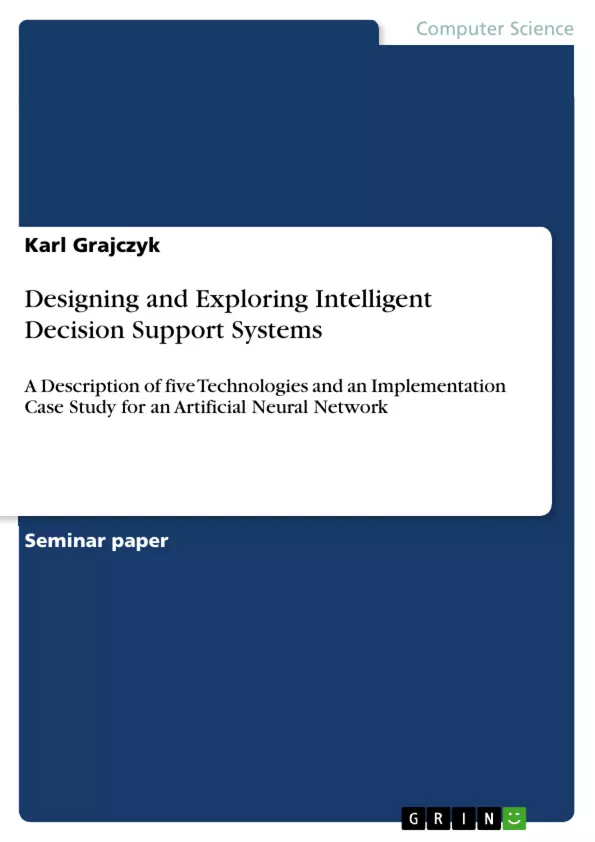In today’s economy the importance of effective and efficient decision making has become
increasingly important in order to stay competitive in a global market set.
Obtaining most relevant data and outputs is the key for best decisions on every management
level. That is why the application of decision support systems (DSS) is now irreplaceable in
organizations that operate a state-of-the art decision making processes.
This paper discusses Group Support Systems, Expert Systems, Knowledge Management
Systems, Neural Networks, and Fuzzy Logic Systems focusing on
· the description of the methodology
· their applications and software vendors
· current research
· and new developments.
The analysis of these five systems is followed up by a case study that provides an example for
a real life application of a neural network. It will be exposed how this decision support system
facilitates the classification of potential patients for hospitals and how effective marketing
strategies specified to each group of patients could be created.
By comparison the application of an expert system for the same problem will be investigated.
Concluding, a summary will compose the results of this paper focusing particularly on the
outcomes of the case study. Advantages/disadvantages for the application of either system
will be examined. The authors will then eventually state their personal recommendation for
solving the problem given in the case study and comment on possible reasons why hospitals
decided to apply a neural network.
- Quote paper
- Karl Grajczyk (Author), 2008, Designing and Exploring Intelligent Decision Support Systems , Munich, GRIN Verlag, https://www.grin.com/document/142203



